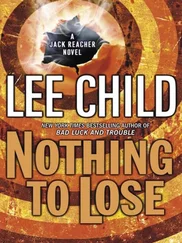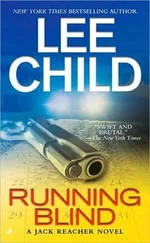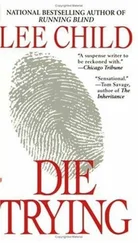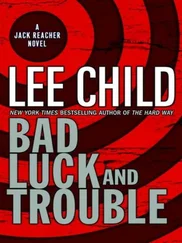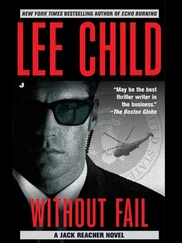“Who did?”
“Livermore. The new lab in California. Truth is, their new weapons system was a failure. They got small, but not small enough. They packed the power of the Hiroshima bomb into a cylinder eleven inches wide and sixteen inches tall. It weighed just fifty pounds. The same fifteen-kiloton yield as Little Boy. Equivalent to fifteen thousand tons of TNT. But Little Boy was ten feet long and weighed five tons. So Livermore’s cylinder was a triumph of miniaturization. But unfortunately it wasn’t quite enough of a triumph. It was still too big to use as an artillery shell or a mortar round. There was no reliable man-portable launcher. It was a curiosity, nothing more. It was a solution in search of a problem. But waste not, want not. They found a relevant problem. They gave the cylinder a new name, SADM, for special atomic demolition munition, and they gave it to the 82nd Airborne. Now my guys could jump with just fifty pounds on their backs and take out any road or bridge or viaduct they wanted.”
“With nuclear bombs?”
“As big as Hiroshima.”
No one spoke.
Reacher said, “What was the SADM’s old name?”
“Take a guess.”
“Davy Crockett.”
Helmsworth nodded. “That was the name they gave to the W-54 warhead. I don’t know why. But it took over. No one ever said SADM. They called the things Davy Crocketts instead. They came with padded canvas transport containers built like backpacks. You strapped it on, and you were good to go. But it was unpopular duty. The cylinders leaked radiation. Or so people said. Some folks got sick. They worried about cancer. But mostly they worried about the newsreel film they had seen from Hiroshima. That immense explosion. They were carrying the exact same bomb. Their orders were to strap it to a bridge support, set the timer, and run like hell. Very different than dropping it out of an airplane eight miles up.”
Neagley said, “How long was the timer?”
“A maximum of fifteen minutes. Plus or minus. It wasn’t very accurate.”
“That’s insane. The Hiroshima lethal blast radius was one mile. The fireball radius was two miles. That’s twelve minutes for most guys on a running track. Across mixed terrain it would likely be impossible. Especially if they had to fight their way in. They’d have to fight their way out again. While waiting to be incinerated. It was a suicide mission.”
Helmsworth nodded again. “It was a different calculus back then. We would have given up two companies to stop a million men and ten thousand vehicles getting out. We would have thought of it as a bargain.”
Reacher said, “Two companies?”
“We had a hundred Davy Crocketts.”
“Each with its own target?”
“Carefully planned.”
“Widely distributed?”
“Like measles on a map.”
“Except there aren’t a hundred bridges. Or power plants. Or roads or viaducts. It’s a narrow funnel. That’s why they call it a gap.”
“There was redundancy built in. About half were to proceed to standby positions.”
“In the spaces. Linking everything up.”
“Like a chain.”
“You were making a radiation barrier. Like a minefield. With a hundred bombs it could have been ten miles wide by ten miles deep. Any shape you wanted. You wanted to force the Soviets to go left or right. Where you were waiting.”
“The file is closed.”
“Because as time passed all kinds of treaties were signed. You couldn’t do it anymore. You couldn’t even admit planning it.”
“Yes,” Helmsworth said. “The SADMs were retired, but not strictly for military reasons. They were all brought home. They were not replaced. Eventually nuclear weapons below a certain size were banned altogether.”
Sinclair said, “Arnold Mason is sick. His wife claims he told her the army would be interested. He told her someone would come.”
“Sick how?”
“Brain tumor.”
“It was a very long time ago. Most cases were much earlier.”
“There were others?”
“A sprinkling,” Helmsworth said.
Reacher said, “Such stories wouldn’t make me want to join the army.”
Helmsworth said nothing.
Reacher said, “General?”
“Different recruits have different reasons.”
“Horace Wiley was a thirty-two-year-old thief. I don’t think training for a suicide mission and getting sick and then seeing the weapons go home anyway would have done the trick for him.”
Helmsworth said nothing.
Reacher said, “General?”
“This is classified at the presidential level.”
Sinclair said, “For these purposes, so is everyone in this room.”
Helmsworth said, “It’s possible there was an inventory error.”
Helmsworth said, “Initial cargo manifests show ten crates leaving Livermore. Each crate held ten Davy Crocketts. Ten times ten is a hundred, which was the number of bombs we trained with. Later cargo manifests show the same ten crates going home again, each one with the same ten bombs inside. Ten times ten is a hundred. All accounted for. All properly delivered and safely stored inside the United States. All subsequently checked and physically examined and counted in front of witnesses. There are exactly one hundred in our possession.”
Reacher said, “So what was the error?”
“Those were the cargo manifests. A hundred out, and a hundred in. They matched all known army paperwork. But years later at the Livermore lab someone found an unsent invoice for an eleventh crate. Ten more Davy Crocketts. There was no coherent delivery paperwork. The production figures were ambiguous. It was possible an eleventh order was filled.”
“But not paid for. Which is unlikely. Which means the invoice was probably the error. Possibly why it was never sent.”
“That was the initial conclusion,” Helmsworth said. “Unfortunately the crate manufacturer had contradictory evidence, from an unlikely source. An apprentice’s log showed eleven crates had in fact been built. The foreman of the shop had signed off on them all. The eleventh crate wasn’t in the crate factory. It wasn’t at Livermore. And if ten more bombs had been built, they weren’t at Livermore either. So where the hell were they? Did they even exist? Half the argument was philosophical. The other half was better safe than sorry. So they started searching. Didn’t find anything. Not at home, and not overseas. Maybe the apprentice was wrong. But then the foreman had to be wrong, too. They went back and forth.”
“Until?” Reacher said.
“It was a split committee. The majority said the ambiguous production figures should be read the other way around, and that therefore the eleventh order had not been manufactured in the first place, and that the invoice was incorrectly raised. Or fraudulently raised, perhaps.”
“That sounds like a threat, to make the problem go away.”
“Perhaps it was.”
“What did the minority think?”
“That Livermore wouldn’t have ordered the extra crate unless it had bombs to put in it. The crates were prototypes of a standardized system. They were modified inside to carry the load. But on the outside they all looked the same. The error could have been in the delivery paperwork. The crate could have left Berkeley and gone to the wrong destination. Or the right destination with the wrong product description. The inventory codes were very complicated. A single-digit mistake could have been fatal.”
“That’s a lot of could-haves,” Reacher said. “That’s a cascade of three separate errors. Wrong delivery paperwork, wrong inventory code, and the invoice was never sent.”
“Every year we were spending billions of 1950s dollars on millions of tons of equipment. The sample size was enormous. It was a frenzy. There was scope for every kind of error. How long have you served, major?”
Читать дальше



